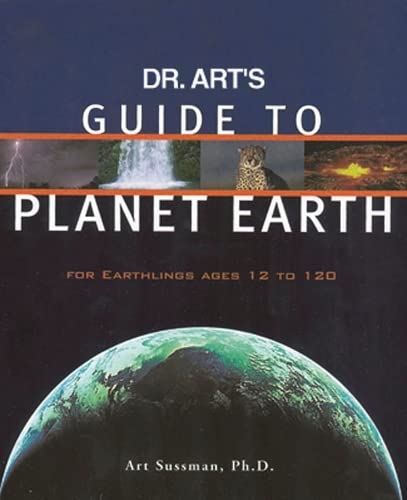An Introduction to Planet Earth...

I think this, "Dr. Art's guide to planet Earth : for earthlings ages 12 to 120", is probably the best introduction to Planet Earth I’ve ever read. Here is my one page edit…
Earth is Whole
Earth is not flat. Earth is much more than round. Earth is whole.
“Earth is Whole” means that all the planet’s physical features and living organisms are interconnected. They work together in important and meaningful ways. The clouds, oceans, mountains, volcanoes, plants, bacteria and animals all play important roles in determining how our planet works.
Systems within Systems within Systems
The first step towards understanding how Earth works is thinking about our planet as a system. We use the word “system” when we want to describe something that is made up of different kinds of parts that join together to form an interconnected whole.
- each part of a system can itself be described as a system;
- a system can be very different from its parts.
Each part of a system can itself be described as a system.
You are a system. One of the parts of the “you system” is your circulatory system. The heart, a part of the circulatory system, is also a system made of parts. Its parts include muscle cells, nerve cells and valves. A heart muscle cell is part of the heart system but it is also a system which is made up of a cell membrane, cell nucleus and many different proteins.
And the story does not end with us. Each of us is part of a family system. Each of us is part of an ecosystem. Each of us is part of an entire human system that is part of a system of life on this planet.
A system can be very different from its parts.
Think about your arteries, red blood cells, stomach and toenails. Your stomach is a part of who you are, but you are much more than your stomach. You are much more than the sum of your parts. As a functioning interconnected whole, you have characteristics that do not exist in any of your parts. You have properties that transcend, that go far beyond the qualities of your parts.
A car provides another example of a system. A car has brakes, wheels, cylinders, battery, windshield wipers, carburetor, gas tank, metal frame, steering wheel, and hundreds of other parts. Individually none of those parts will move you from your home to school, work, a restaurant or a lake. Joined together as an interconnected whole, the car system can take you away. It has properties that are qualitatively different than the properties of its parts. No part of a car gets 35 miles per gallon on the highway. No part of a car has the ability to transport you up a mountain road. Only the car as a functioning whole system has these properties.
The popular saying “the whole is more than the sum of its parts” describes this second system feature. This popular saying is much deeper than it might first appear. When we say that the whole is more than the sum of its parts, we mean that the whole system has qualities that are different than those of the parts. The whole is qualitatively different, which is a much more important difference than a mere increase in quantity.
Take water as another example of a system. Water is made of hydrogen and oxygen. At normal temperatures and pressures, they are both gases. Hydrogen is highly explosive and fire requires oxygen. Put them together and you have a liquid that extinguishes fires. The system of hydrogen joined with oxygen (H2O) has properties that are qualitatively very different from the parts hydrogen alone or oxygen alone.
The reason to care about “systems within systems within systems” is that systems thinking provides us with a way to understand any particular system, especially complicated ones like planet Earth. No matter what the system is, we can always understand it better by asking three systems questions:
|
THE THREE SYSTEMS QUESTIONS What are the parts of the system? |
The Earth System
Earth’s Matter
With respect to matter, Earth is a closed system. Matter does not enter or leave.
|
Earth’s Energy
With respect to energy, Earth is an open system. Sunlight energy flows in and heat energy escapes.
|
Earth’s Life
With respect to life, Earth is a networked system. Not only do organisms form an interconnected web, they also participate actively in Earth’s matter cycles and energy flows. Human beings depend on the web of life for the air that we breathe and the food that we eat. As our numbers have exponentially increased and our technologies have altered virtually every part of the globe, we have become a very important part of this web of life.
|
Three Principles
MATTER CYCLES
Each of the elements that is vital for life exists on Earth in a closed loop of cyclical changes. From a systems point of view, Earth is essentially a closed system with respect to matter.
ENERGY FLOWS
The functioning of our planet relies on a constant input of energy from the sun. This energy leaves Earth in the form of heat flowing to outer space. From a systems point of view, Earth is an open system with respect to energy.
LIFE WEBS
A vast and intricate network of relationships connects all Earth’s organisms with each other and with the cycles of matter and the flows of energy. From a systems point of view, Earth is a networked system with respect to life.
|